March 16, 2022
Move Toward Integrated Model Enables Greater Participation in Financial Growth and Success
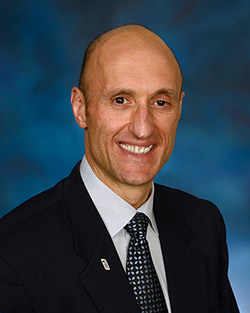
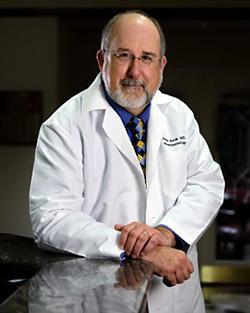
Dean Reece spearheaded the redesign by appointing a Governance Committee of several chairs and clinical program directors, along with Dean’s representatives, Senior Associate Dean for Clinical Affairs (Tony Lehman, MD) and Associate Dean for Practice Plan Affairs and Chief Corporate Officer (Bill Tucker, MBA, CPA). In addition, the group retained the services of an external consulting group, with whom they worked with for over a year. Following the Dean’s charge to the Committee, regular reports and engagements were made to the Dean, who provided added guidance along the way.
The redesign, developed by the UMSOM Governance Committee, led by Dr. Rock, proposed an integrated group practice model in which departments have greater participation in the shared business plans and initiatives, and in financial growth, while preserving economies of scale and aspects of the previous “federated” model. Ultimately, there is expectation for increased revenue and profit margins generated from a variety of joint venture initiatives, hospital incentive arrangements, and collective efficiencies. The faculty group practice continues to report directly to the Dean as well as to the FPI Board, as it remains the "clinical arm" of the School of Medicine. The President and CEO of the University of Maryland Medical Center (Bert O'Malley, MD) has now been appointed to the FPI Board as an ex-officio member. In addition, there are multiple advantages of the new plan, including strengthening of FPI’s alignment with UMMC and UMMS, creating shared decision-making structures, reducing artificial siloes and barriers, and attempting to maximize trust amongst and between all stakeholder groups.
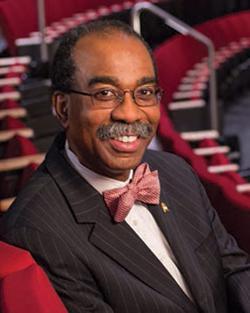
“This is a tremendous step forward in ensuring FPI’s long-term success,” said Dean Reece, who is also Executive Vice President for Medical Affairs, UM Baltimore, and the John Z. and Akiko K. Bowers Distinguished Professor. "The new plan will create a truly integrated faculty practice, maximizing our opportunities to improve expense efficiencies, revenue enhancement, greater fiscal equity and cross-specialty clinical services. It will essentially operate as a single multi-disciplinary department.”
“Most importantly,” Dean Reece added, “the new plan will preserve those elements that have made FPI successful over the years – maintaining strong and effective leadership of chairs and directors, promoting entrepreneurship, effective board and committee structure, and maintaining cash reserve in excess of four months, among other aspects.”
Members of the Governance Committee
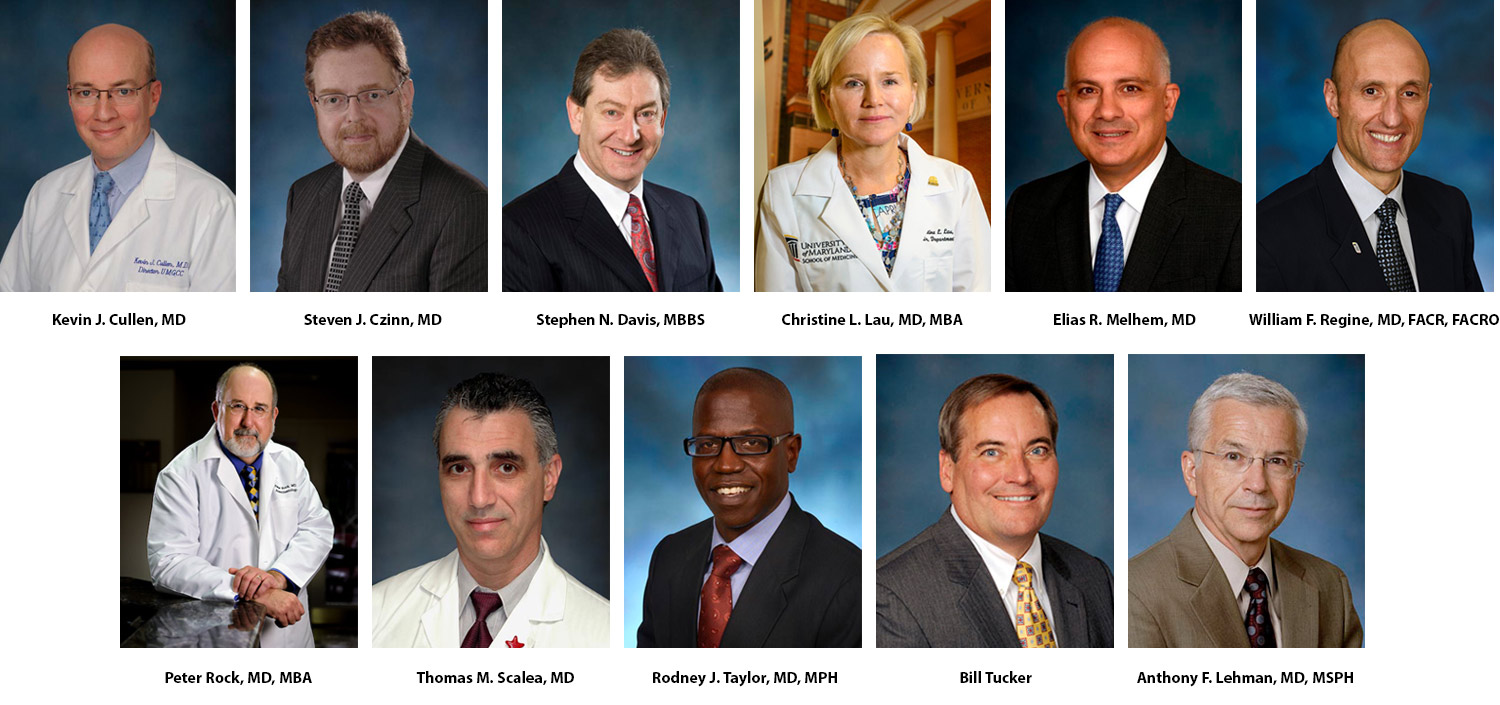
Dr. Regine commented: “The redesign will enable FPI to become an integrated multi-specialty clinical enterprise of excellence, in alignment with our UMMC/UMMS and community partners, which further fuels excellence in our academic missions impacting patients worldwide.”
Dr. Rock noted the previous federation of individual practices was not built for the current challenges, such as Maryland’s unique reimbursement system, and the financial instability exposed during the pandemic.
“Our new structure will allow us to speak with one voice and, by doing so, enhance strategic planning, improve internal efficiencies, strengthen our ability to respond to unexpected challenges, and improve our partnership with UMMC and UMMS,” he said. “The Redesign has truly been a collective process. I want to recognize and thank the FPI Governance Committee, as well as Dr. Regine, a member of the committee, for all their hard work and thoughtfulness.
FPI has collaborated with University of Maryland Medical System (UMMS) and, in many instances, FPI clinical practices are located in or near to UMMS Hospitals, while others are free standing. (See Figure 3). FPI has seen a dramatic advancement in its business and financial operations over several years – moving from a position of financial instability to its current position of fiscal strength and stability.
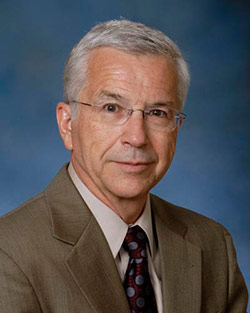
Over the past 15 years, UMSOM’s clinical revenue increased by more than 118 percent since 2006 (from $160M to $351M) (See Figure 1), and total Patient Volumes increased by 62 percent, from 951,000 in FY 2006 to more than 1.5 million in FY 2020 (See Figure 2). At the same time, accounts receivables were 57 days in 2006 and are now down dramatically to 33 days (See Figure 4). Cash reserve now achieves the national standard of business, growing from less than one month to more than 4 months (See Figure 5).
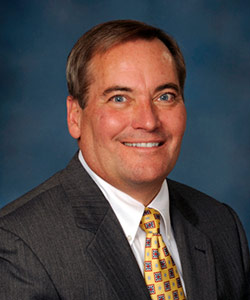
“We should all be proud of how FPI has grown and matured over the last 15 years,” said William Tucker, MBA, CPA, Associate Dean for Practice Plan Affairs at UMSOM, and Chief Corporate Officer of FPI. who has been the business leader for FPI during that period. “Even so, the marketplace and physician reimbursement represent continuing challenges and complexity for us. In particular, the COVID pandemic and its financial impact on our practices made it clear that we need to increase our level of integration and align ourselves around common strategies. This new organization will allow us to do that. I am excited to see what new opportunities this new structure opens up for our group practice,” Mr. Tucker said.

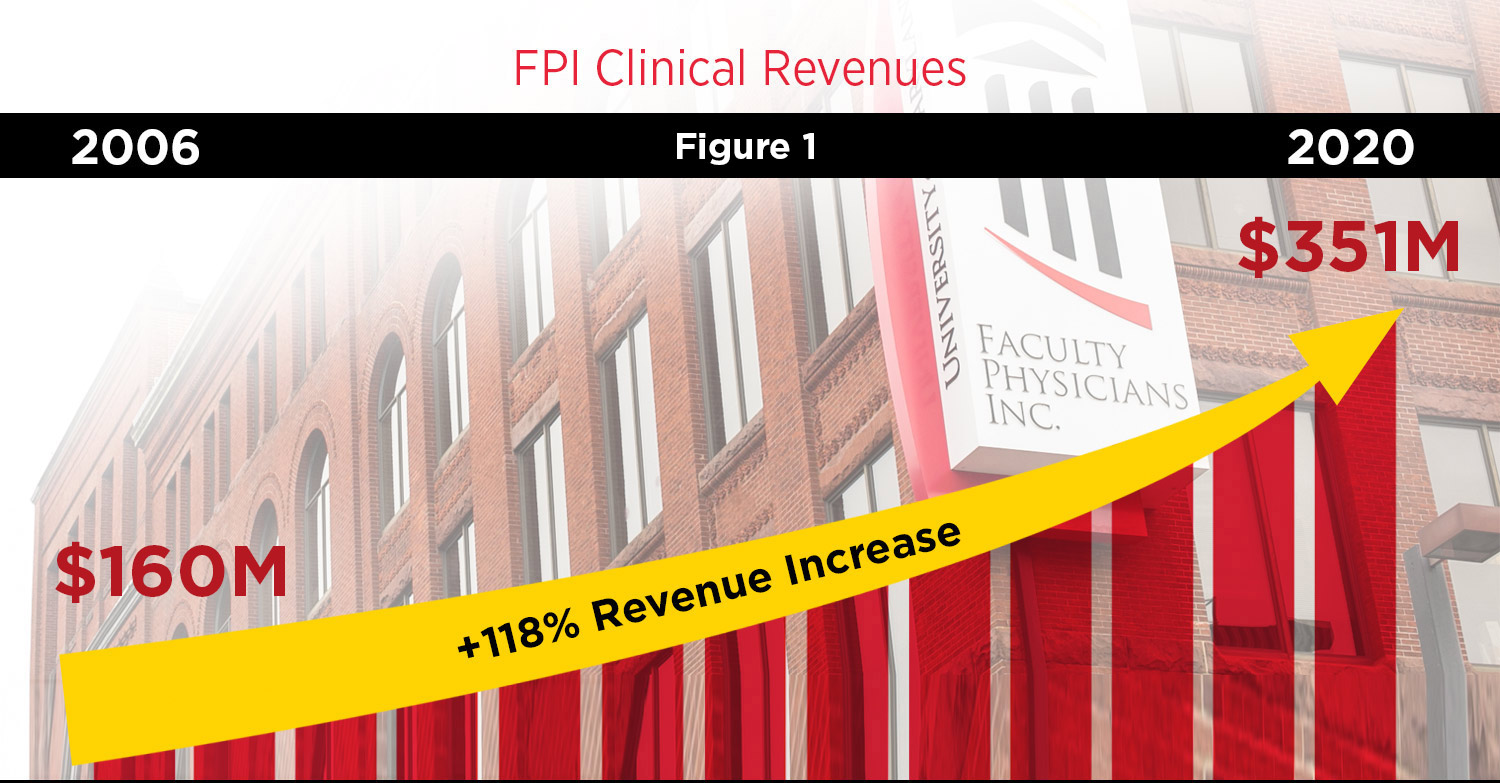
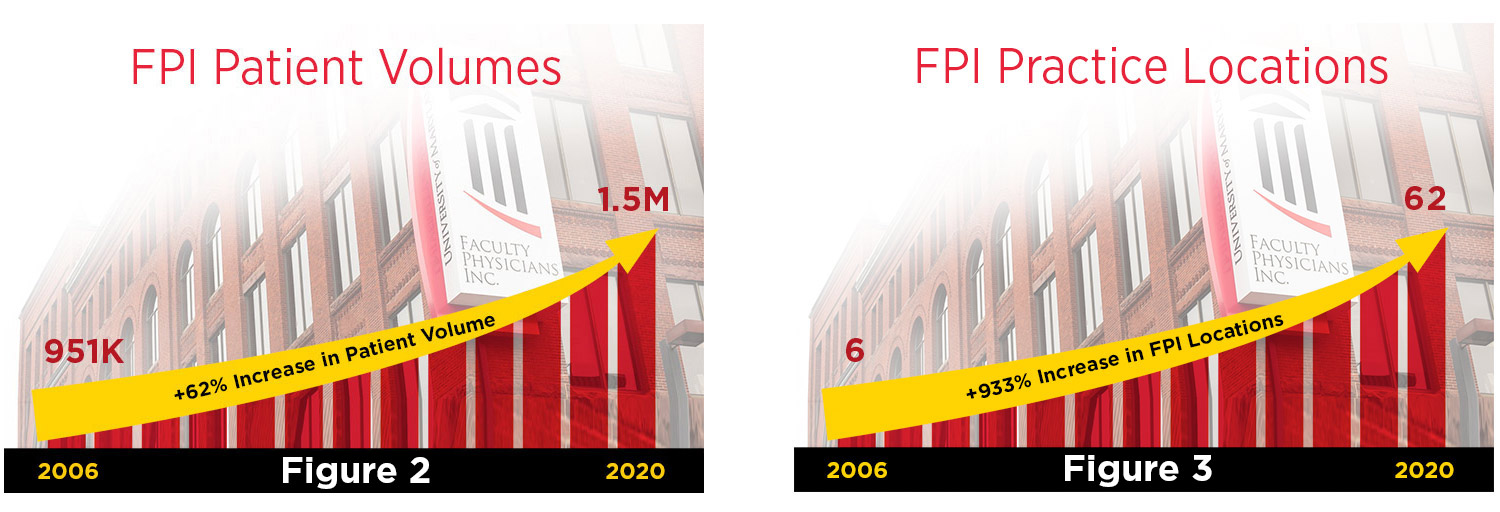

About the University of Maryland School of Medicine
Now in its third century, the University of Maryland School of Medicine was chartered in 1807 as the first public medical school in the United States. It continues today as one of the fastest growing, top-tier biomedical research enterprises in the world -- with 46 academic departments, centers, institutes, and programs, and a faculty of more than 3,000 physicians, scientists, and allied health professionals, including members of the National Academy of Medicine and the National Academy of Sciences, and a distinguished two-time winner of the Albert E. Lasker Award in Medical Research. With an operating budget of more than $1.3 billion, the School of Medicine works closely in partnership with the University of Maryland Medical Center and Medical System to provide research-intensive, academic and clinically based care for nearly 2 million patients each year. The School of Medicine has nearly $600 million in extramural funding, with most of its academic departments highly ranked among all medical schools in the nation in research funding. As one of the seven professional schools that make up the University of Maryland, Baltimore campus, the School of Medicine has a total population of nearly 9,000 faculty and staff, including 2,500 students, trainees, residents, and fellows. The combined School of Medicine and Medical System (“University of Maryland Medicine”) has an annual budget of over $6 billion and an economic impact of nearly $20 billion on the state and local community. The School of Medicine, which ranks as the 8th highest among public medical schools in research productivity (according to the Association of American Medical Colleges profile) is an innovator in translational medicine, with 606 active patents and 52 start-up companies. In the latest U.S. News & World Report ranking of the Best Medical Schools, published in 2021, the UM School of Medicine is ranked #9 among the 92 public medical schools in the U.S., and in the top 15 percent (#27) of all 192 public and private U.S. medical schools. The School of Medicine works locally, nationally, and globally, with research and treatment facilities in 36 countries around the world. Visit medschool.umaryland.edu
Contact
Office of Public Affairs
655 West Baltimore Street
Bressler Research Building 14-002
Baltimore, Maryland 21201-1559
Contact Media Relations
(410) 706-5260
Related stories
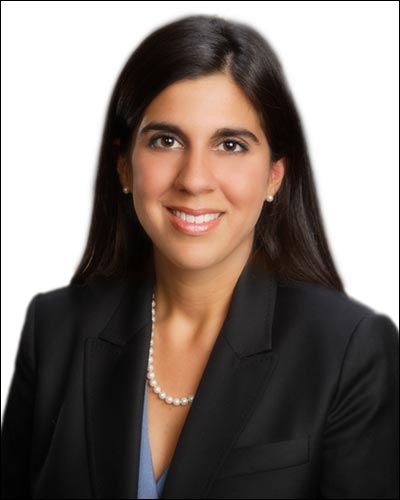
Monday, May 15, 2023
Leading Healthcare Executive Rachel Hoover, MS, MBA, Named Executive Vice President at UM Faculty Physicians, Inc.
William F. Regine, MD, President of University of Maryland Faculty Physicians, Inc. (FPI), along with University of Maryland School of Medicine (UMSOM) Dean Mark T. Gladwin, MD announced today that Rachel L. Hoover, MS, MBA, will serve as the new FPI Executive Vice President and Chief Administrative Officer (EVP/CAO), effective May 1.
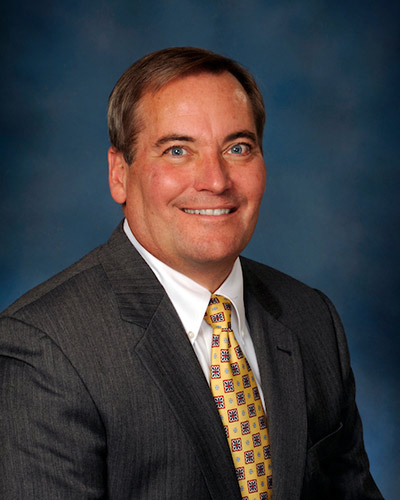
Tuesday, March 22, 2022
Longtime Leader of UM School of Medicine Faculty Clinical Practices, William Tucker, Announces He Will Retire July 1; Led More Than Two Decades of Growth and Success
University of Maryland School of Medicine (UMSOM) Dean E. Albert Reece, MD, PhD, MBA, announced today that William Tucker, MBA, CPA, Associate Dean for Practice Plan Affairs at the University of Maryland School of Medicine (UMSOM), and Chief Corporate Officer for the UM Faculty Physicians, Inc. (FPI), will retire from his position on July 1. For the past 22 years, he led the organization to its highest levels of operational performance and excellence in patient care, while successfully expanding outpatient practice locations across the State of Maryland.
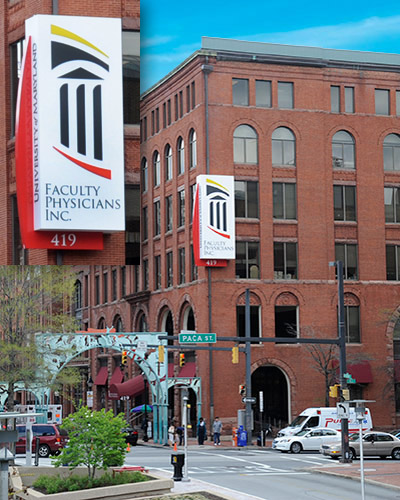
Wednesday, June 02, 2021
University of Maryland Faculty Physicians, Inc. (FPI) Positions for Significant Business Growth and Advancement, Promotes Three Top Executives to Senior Leadership Positions
William Tucker, MBA, CPA, Associate Dean for Practice Plan Affairs at the University of Maryland School of Medicine (UMSOM) and Chief Corporate Officer for University of Maryland Faculty Physicians, Inc. (FPI), along with UMSOM Dean E. Albert Reece, MD, PhD, MBA, have announced recent promotions in the FPI organization. These are expected to further enhance the financial growth and success of FPI, the UMSOM’s faculty practice organization.

